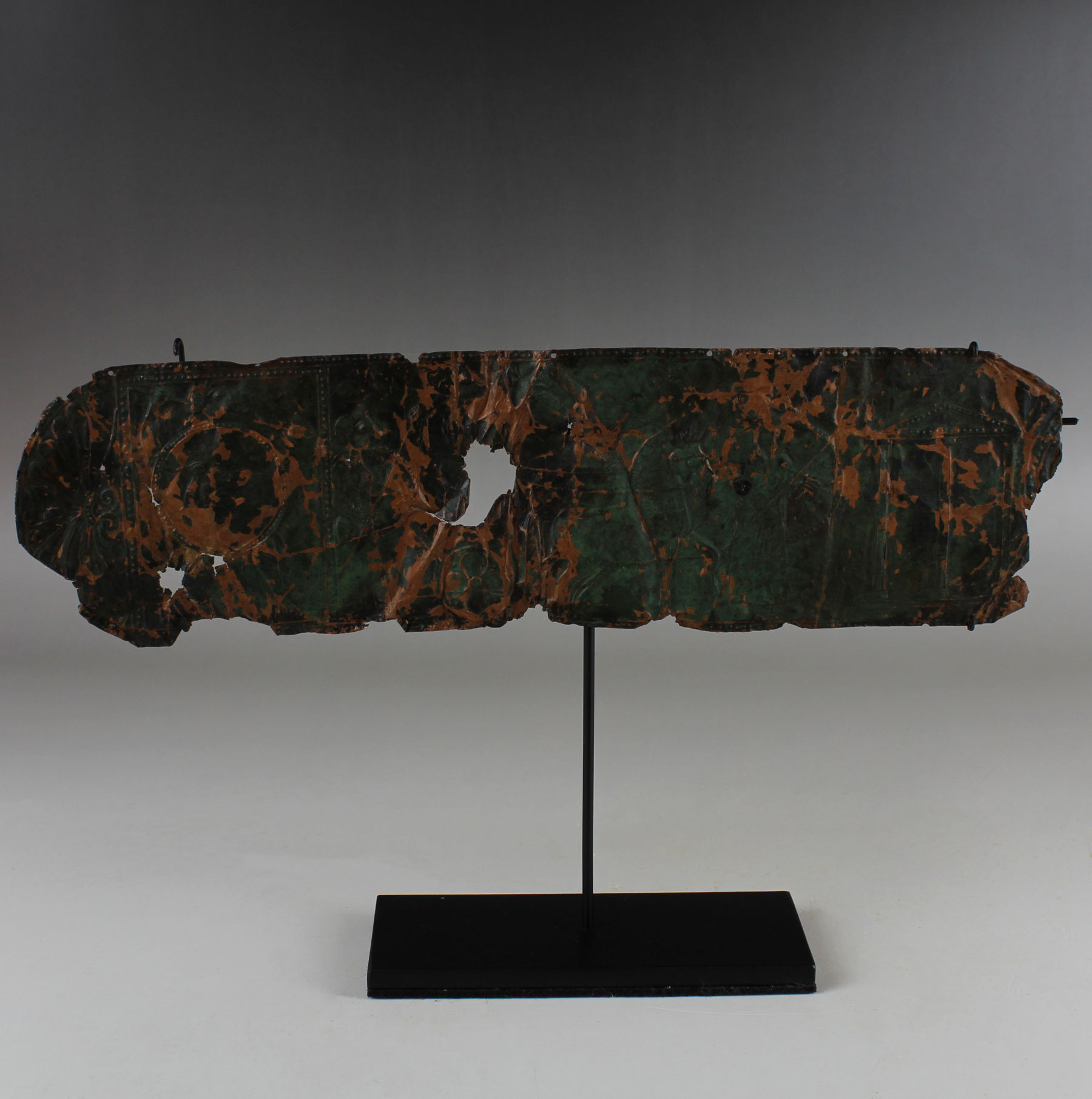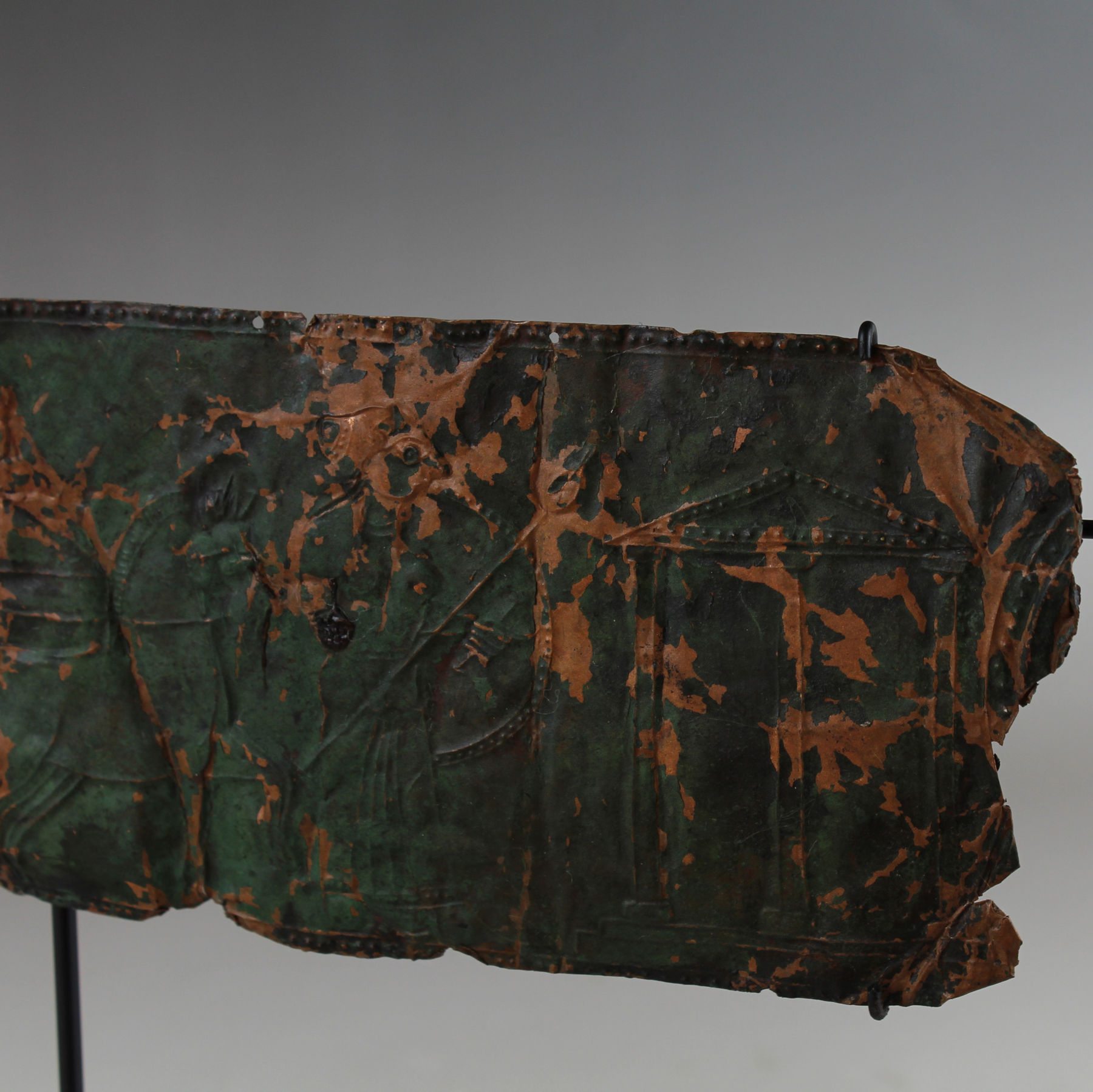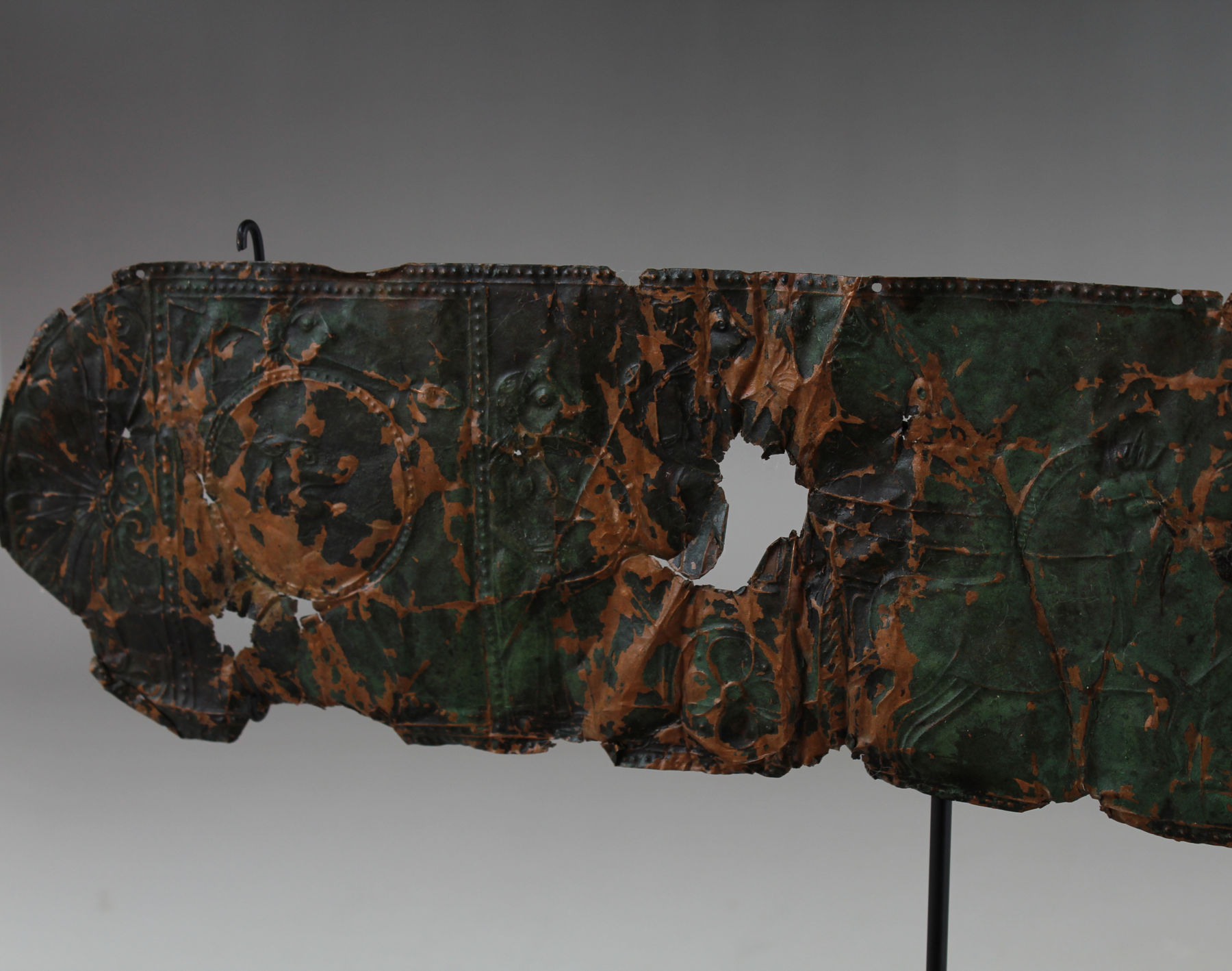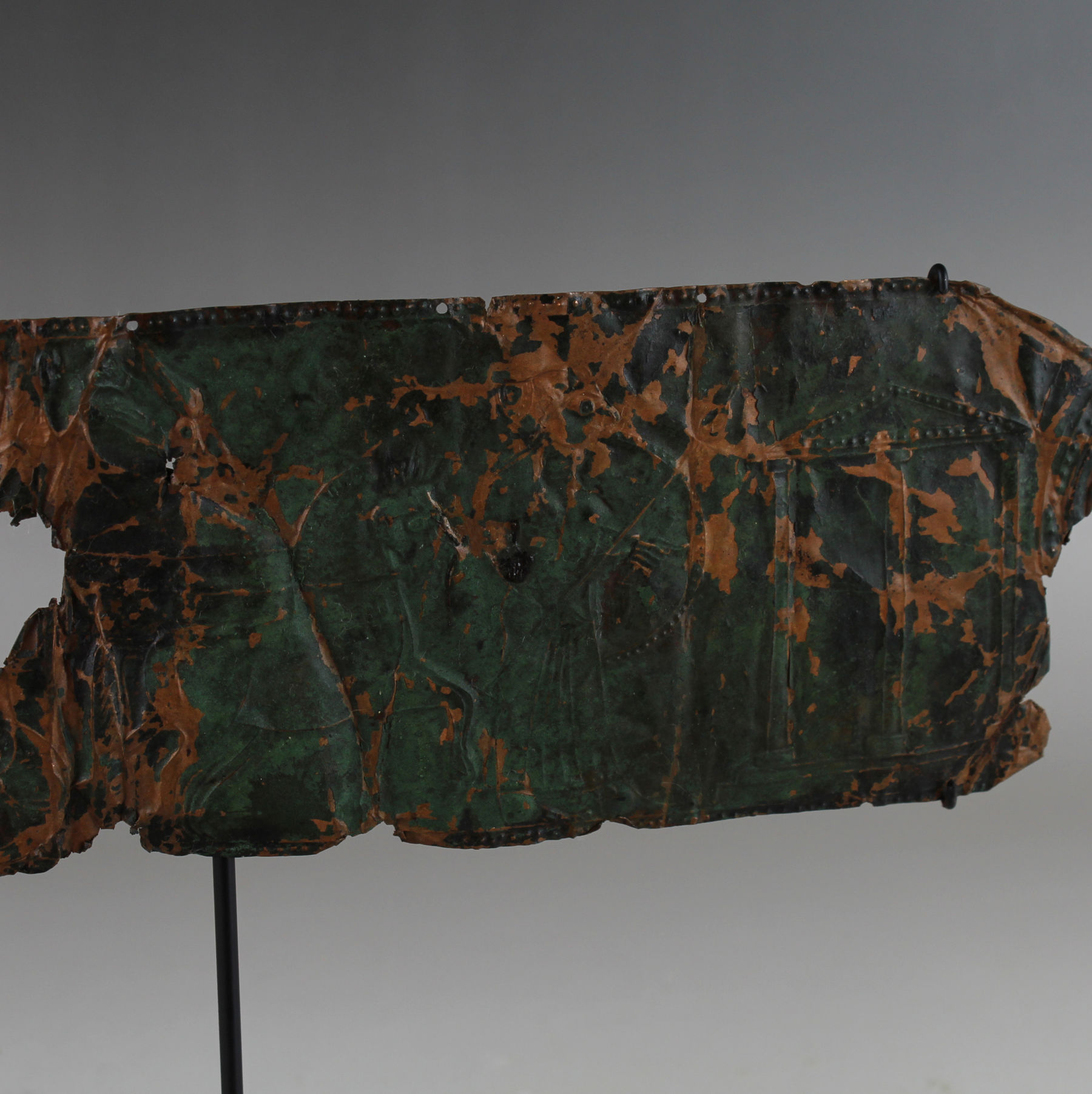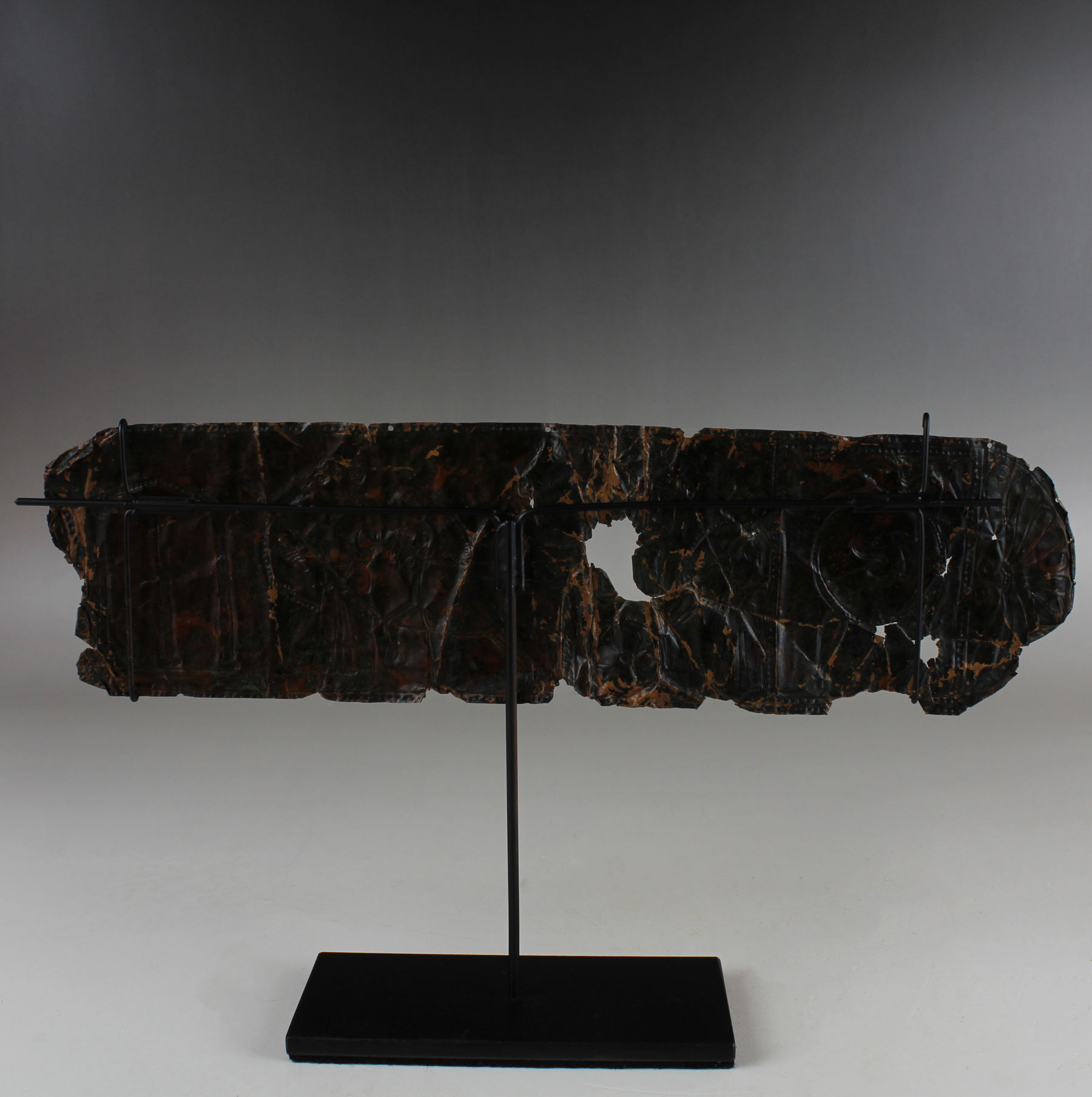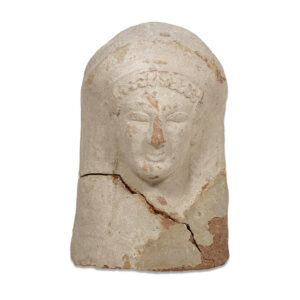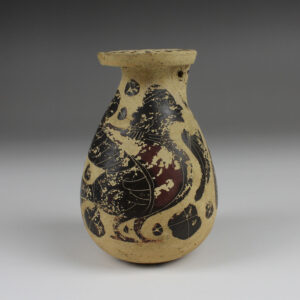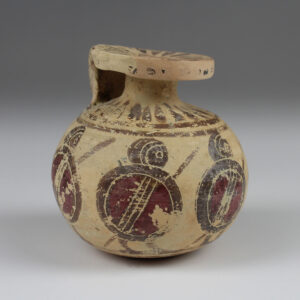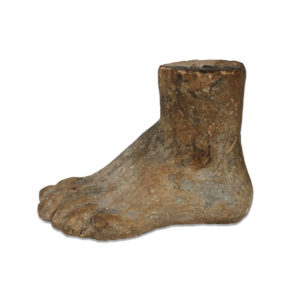Description
| ITEM | Sheet decoration, possibly a belt fitting, with repoussé technic. Depicts a procession of warriors carrying spears and shields accompanied by charioteers |
| MATERIAL | Bronze |
| CULTURE | Etruscan |
| PERIOD | 7th – 5th Century B.C |
| DIMENSIONS | 72 mm x 272 mm (without stand) |
| CONDITION | Good condition. Includes stand |
| PROVENANCE | Ex Dutch private collection, J.T., collected before 1980s |
| BIBLIOGRAPHY | THE BRITISH MUSEUM Collection, accession number 1850,0227.15.b |
Etruscan processions were religious and cultural events held in the ancient Etruscan civilization, which thrived in the region of Etruria in what is now Italy, roughly between the 8th and 3rd centuries BCE. These processions were a significant part of Etruscan religious and social life, offering a fascinating glimpse into their culture.
Key aspects of Etruscan processions included their primary religious purpose, involving rituals to honor various gods through music, dance, and song. Priests and priestesses played pivotal roles in organizing and conducting these rituals, often carrying sacred objects and statues of deities in the procession. Participants and religious leaders wore special attire adorned with religious symbols, and these processions held both religious significance and social importance, fostering community gatherings and strengthening social bonds. Additionally, the Etruscan culture had a profound influence on ancient Rome, with some of their religious and cultural practices, including processions, being adopted and adapted by the Romans over time.
These pieces generally showed scenes of a dinner or drinking party with guests lounging on benches; musicians and dancers, including one acrobatically doing a cartwheel; and a procession of warriors carrying spears and shields accompanied by charioteers.
Bronze belts are quite common in aristocratic tombs, especially in female and child burials. The lozenge-shaped belt is associated with the female sphere of life and the matrimonial status of women (Iaia 1999:62). However, the presence of these belts in child burials indicates that they are not only a symbol for married women.


